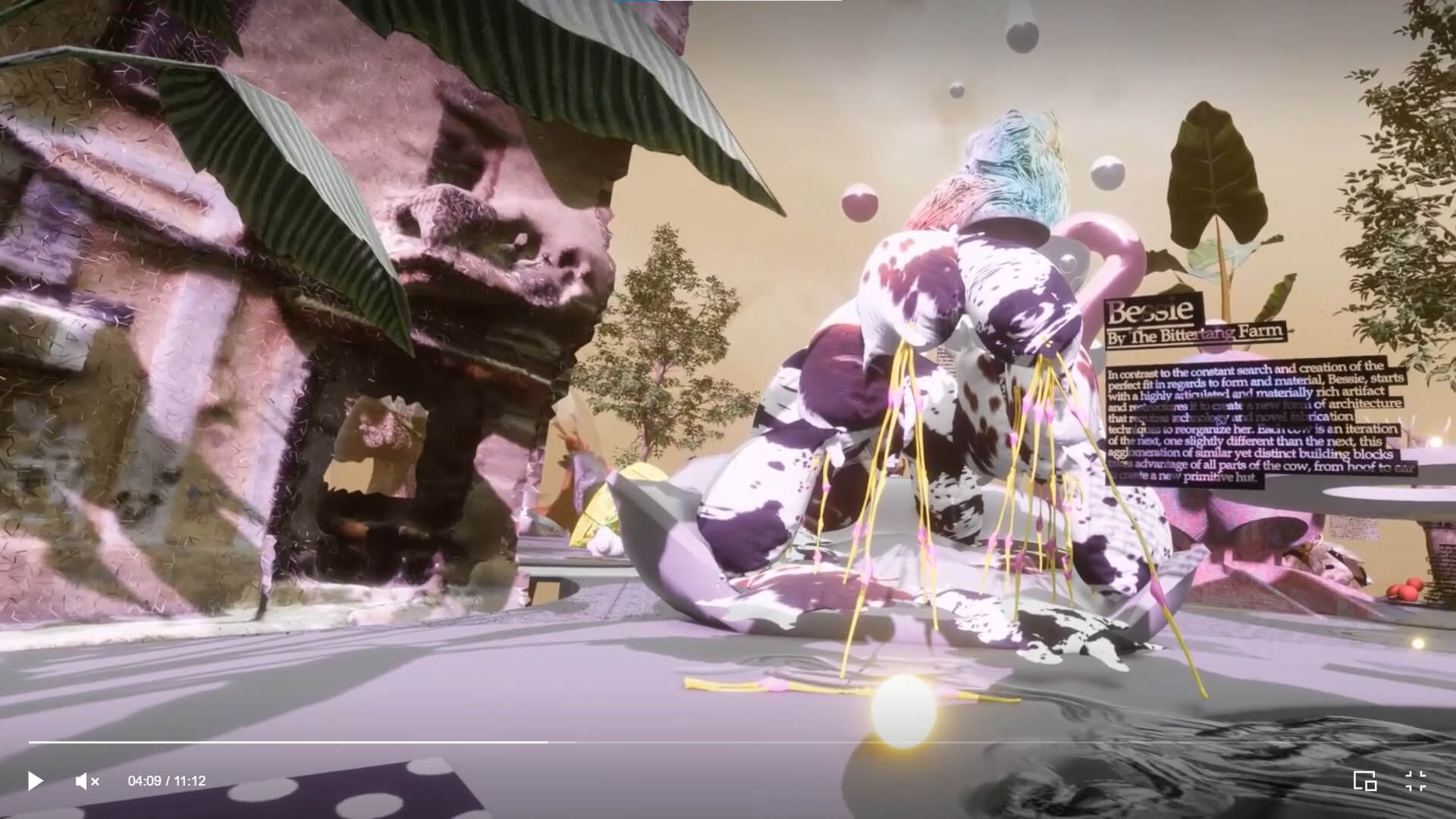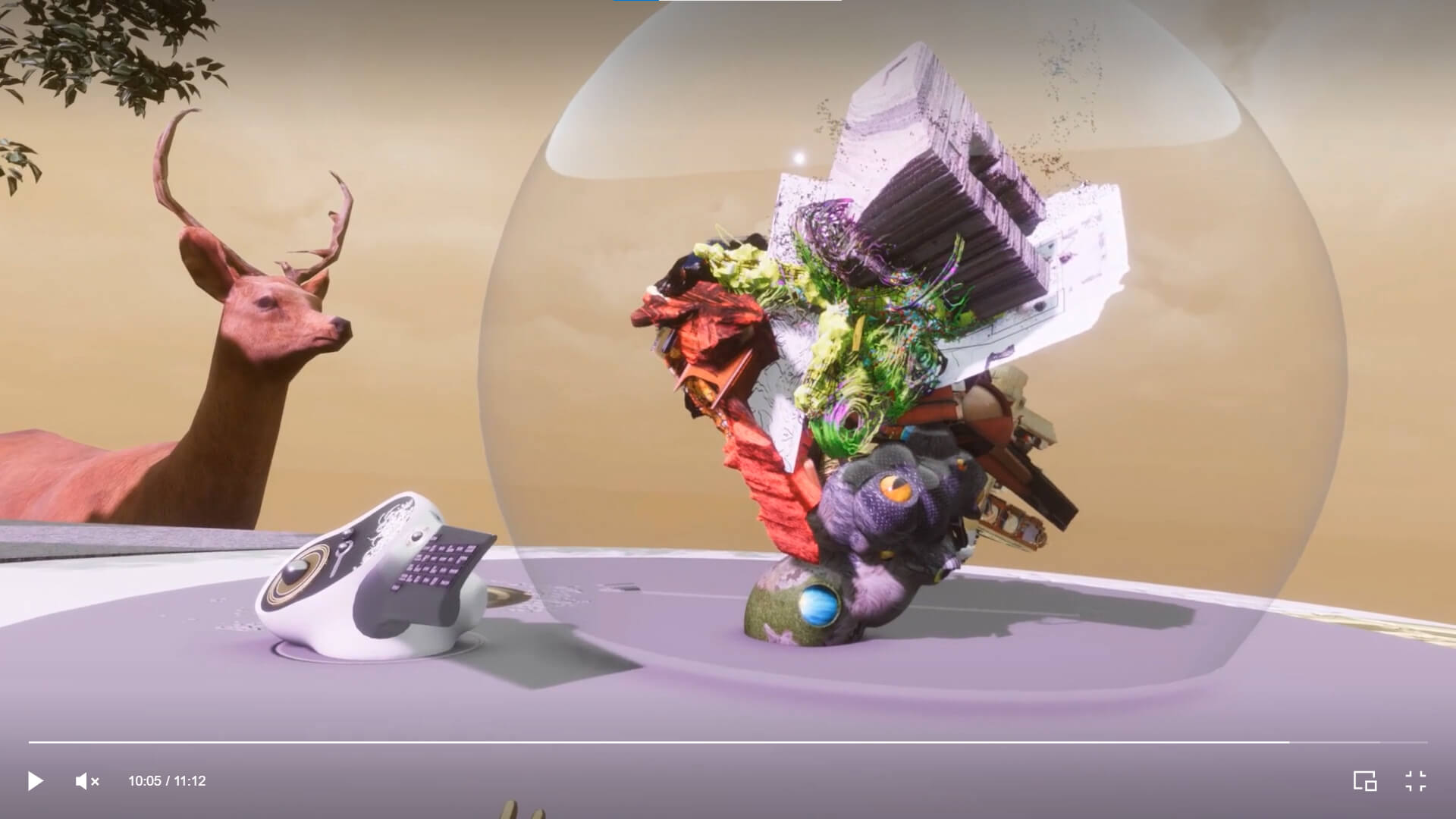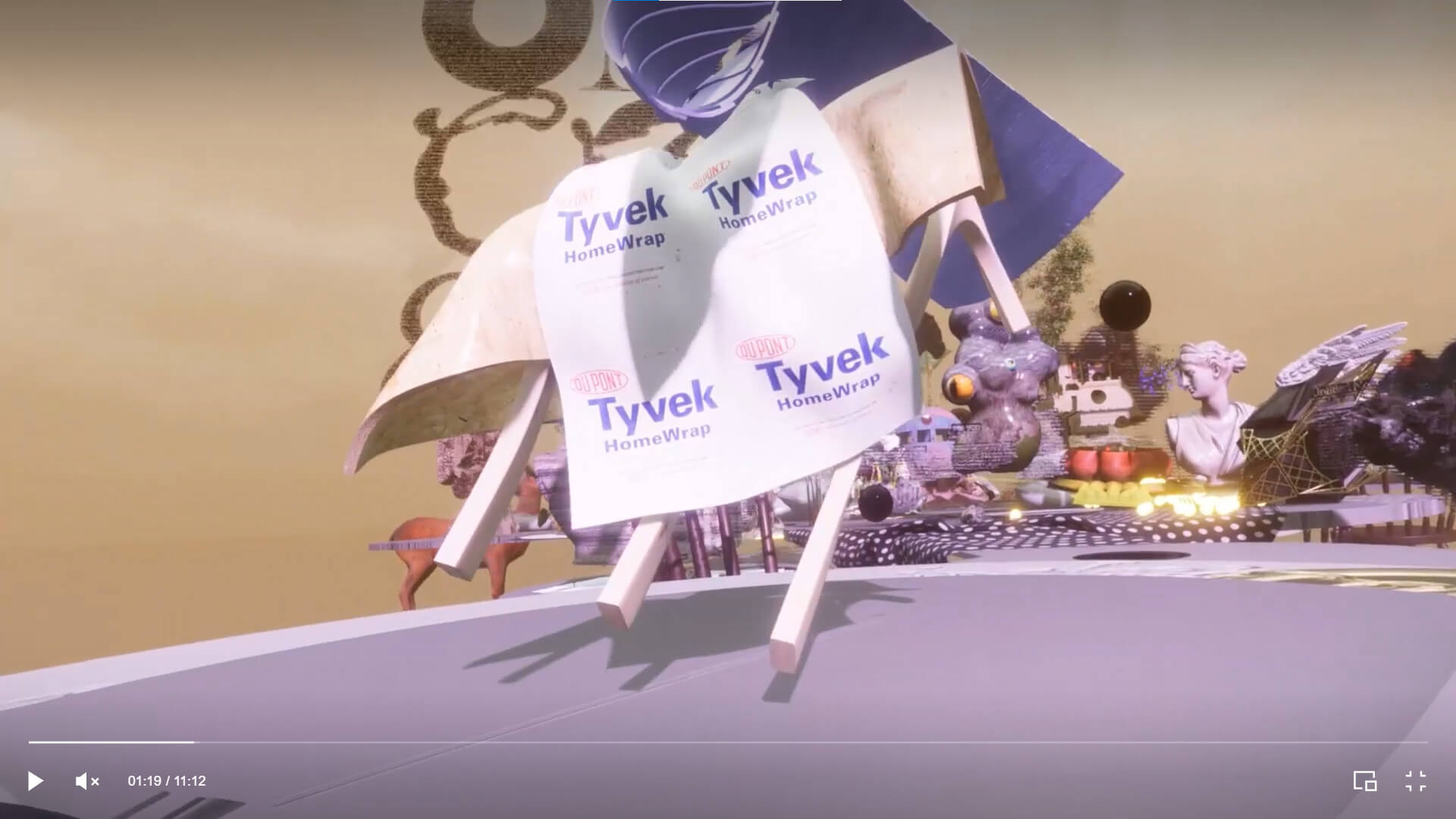Disclaimer: The writer has previously had work exhibited at the A+D Museum, but was not involved in the One Object at a Time exhibit in any capacity.
A strange dichotomy has emerged during the pandemic. Inside our homes, existing habits and creature comforts have intensified (hello again, Netflix, has anything good been added today?), but crossing the threshold and re-engaging the outside is to occupy a totally different world altogether than the one we had in February of 2020.
Though some things have begun to “return to normal” with the widespread availability of vaccines, many have argued that “normal” was never good enough to return to in the first place after COVID exposed and exacerbated the inequities that still plague society—minority communities, in particular. New modes of living and other, possible worlds, they argue, should be imagined and created instead.
The Architecture and Design (A+D) Museum in Los Angeles, an institution for progressive architecture and design exhibits and programming, has taken the challenge of imagining a new future head-on and in two ways. First, with the decision only a few months into COVID to roll out a permanent, purely digital programming agenda, and second, with their current virtual exhibition, One Object at a Time, curated by Ebrahim Poustinchi, assistant professor of architecture and founder of the Robotically-Augmented Design (RAD) Lab at Kent State University and founding principal of Studio EP LLC.

Described by Poustinchi to AN as a “questioning [of] the hierarchical relationship of exhibited and exhibition space,” One Object at a Time is a completely virtual exhibition that quite literally breaks out of the black box of the typical architecture show. Contributions from 28 firms and designers of individual objects defy traditional categorization, including proposed buildings, models, and building fragments, but also vessels, creatures, eyes, blobs, bovine, flowers, monoliths, mountains, motel rooms, furniture, tchotchkes, pavilions, toys, and even “part of a larger unknown whole” as BairBalliet described its contribution, WareWear, a nod to the ambiguity of scale and function in a digital world. The exhibition space occupies an interactive digital world, similar to a video game map, which users explore through a first-person virtual avatar. (The “ideal” visit utilizes virtual reality (VR), but can also be experienced via a more traditional first-person PC gaming environment). Self-contained, the avatar can roam around a series of what seem to be tabletops that define the boundaries of the “gallery.”
The exhibited objects exist on and above this tabletop amongst dining chairs, tablecloths, and silverware, but alongside birds and deer and other animals much larger than our avatar (are we miniature scale figures, or is the dining table-world and its entourage much larger than what they would be in our current existence?). Pillows appear in lieu of the traditional pedestal, which makes sense given the much more casual and happenstance placement of the objects in relation to a traditional gallery. While this model was deliberately and painstakingly designed and planned out by Poustinchi and company, it doesn’t appear as such. Objects are scattered about in order to be observed organically; physical galleries are typically experienced in a linear order, but this map can be circled multiple times before feeling certain you’ve covered it all. For Poustinchi, the goal was defamiliarization: “How can this flattened digital screen become more than a replication of a physical, familiar thing called an exhibition?”
Powered by Sansar, an online, real-time social VR platform (you’ll need a free account to login and download the Sansar desktop app to fully experience the show), the process of creating this world wasn’t as seamless as the result. The curatorial team collected digital .obj models from each of the show’s contributors alongside a PBR (physically-based rendering) UV-material map, being mindful of file sizes and digital “weight” which could cause lagging issues in the final installation. The objects were then tweaked, rebuilt, remeshed, and remapped. Custom collision meshes had to also be created to ensure proper interactive functions with the world and the avatar. All-told, in addition to the various software the contributors used to create their particular objects, a combination of Autodesk Maya, ZBrush, and C# custom coding for Unity and Sansar were utilized in creating the show.

There are two elements to analyze the significance of One Object at a Time: the digital gallery as a world of its own and the featured objects themselves. In our world of screens, though the medium of the screen itself recedes in favor of content, the content is codependent on the medium, as YouTubers and Insta-fluencers trying to crack the mysterious code of their app’s algorithm. For the exhibition designer, the display of physical objects has almost always meant designing pedestals and backdrops which got out of the way, allowing the “designed” pieces themselves to shine through individually. In a socially distanced world, this can be accomplished in a cheeky way by simply recreating the physical gallery space in virtual form, as the Cooper Union did for the annual End of Year Show in 2020.
Poustinchi took the opportunity, however, to imagine not a digital replication of a physical medium, but to create a new medium altogether which leveraged the strengths and opportunities that a purely digital format could afford. Exhibited objects aren’t privileged, but instead occupy this interactive world on equal footing with birds and pillows and orbs. They are not precious or protected behind metaphorical plexiglass, but instead can be inhabited, jumped on, walked around and underneath, or even moved. Poustinchi didn’t want to use the term “democratization”—a term which can suffer from overuse and undervaluation, especially in a political moment where many are realizing the precarity of democracy itself—of design and exhibit to describe this other world, but the flattening of hierarchy and openness of experience is something of a more democratic museum experience. “Within the exhibition itself, the audience, with some agency, can ‘re-curate ‘the exhibition…[it is] one world [with] multiple visitors,” Poustinchi explained.
Even though the format of the show is groundbreaking and important in of itself, the content of the objects themselves also matter; what do the particular, curated objects have to say about the state of architecture and technology? In many ways, the work in the show feels like a follow-up to the 2018 publication Possible Mediums by Kelly Bair, Kristy Balliet, Adam Fure, and Kyle Miller. Alumni from that book participating in One Object at a Time include BairBalliet, of course, Clark Thenhaus (Endemic Architecture), Antonio Torres and Michael Loverich (The Bittertang Farm), and Michael Young and Kutan Ayata (Young & Ayata). Themes loosely arranged around object-oriented ontology abound, mostly implicit around the aesthetics and inner lives of architectural objects that resist contextualization or pure functionalism, but sometimes explicit, as in Gabriel Esquivel’s Ontic Capital, where “the object remains its own best explanation,” according to the designer.

Most of the works occupy something of a medium-resolution: multi-colorful and highly-detailed material maps which resist traditional readings of cladding enmesh the objects with a fuzziness that’s less precise than a high-res still rendering. This may be mostly practical for the sake of a smooth user experience, but it also signals a shift from the qualities that were originally associated with the first generation of “digital architecture.” Although there are still plenty of blobs, smooth surfaces, and complex forms (Greg Lynn, a leading architect of the first digital era, and his “Ark of the World” model are featured in the show), most objects seek to use the freedoms of computation to explore aesthetic qualities beyond Deleuzian smoothness. Instead, works like Nate Hume’s 2HV explore earthen ruins and painterly material effects; Ibañez Kim’s Kobugi (鰲) is a solid-but-floating, mysterious, withdrawn mountain.
Each piece is a welcome addition to a world of possible digital architectures, but perhaps the most interesting isn’t the most formally- or materially complex, but those which embrace digital materiality as its own formal language altogether. Galo Canizares and Stephanie Sang Delgado of office ca offer Lightweight Construction Detail #005, an animation frozen-in-time of ordinary construction materials—2x4s, Tyvek house wrap, cement board siding—acting softly and strangely, relaxing and entangling themselves in one another. The Bittertang Farm takes a new spin on “organic architecture” by using iterative cows as their building blocks to create the pavilion proposal, Bessie. These misbehaviors resist the urge for a digital model to be simply a vicar of some physical other but instead, in the spirit of the show, proclaim the digital as a legitimate medium for building new worlds in its own right.

For the A+D, One Object at a Time is exactly the type of groundbreaking museum experience they were hoping to foster when the institution made the move to full-time digital programming in June of last year. Leila Anna Wahba, Head of Programs at A+D, described the impact by telling AN, “The show is exemplary of the creativity afforded to us through digital mediums. We have just been through a year of digital exhibits and this is the first time we have seen such inventive use of the technologies at our disposal… [Ebrahim] took the opportunity to use the elasticity of digital objects to blur the boundaries of curation and world-building.” While One Object at a Time is evidence that the digital can make significant contributions to ideas about world-building, it is in a both-and relationship with the physical rather than an either-or. Wahba said that “As with any realm, exhibition designers and curators will need to adapt to the hybrid nature of our world. As great as the digital has been for many, we tend to forget it is a barrier to access for many.”
One Object at a Time can be seen and experienced at https://www.aplusd.oneobject.org/. Featured designers include: A/P Practice, AN.ONYMOUS, BairBalliet, Endemic Architecture, Ferda Kolatan/SU11 Architecture and Design, Folly Feast Lab, Gabriel Esquivel, Greg Lynn FORM, hoX/Brendan Ho, Hume Architecture, Ibañez Kim, iheartblob, Ivan Bernal, James F. Kerestes, Jason Vigneri-Beane, Jean Jaminet, Keyla Hernandez, MR Studio, Nick Safley, office ca, Ozel Office, Rachel McCall, Sandhya Kochar and Austin Lightle, Tekena Koko, The Bittertang Farm, ybaynes studio, and Young & Ayata.











